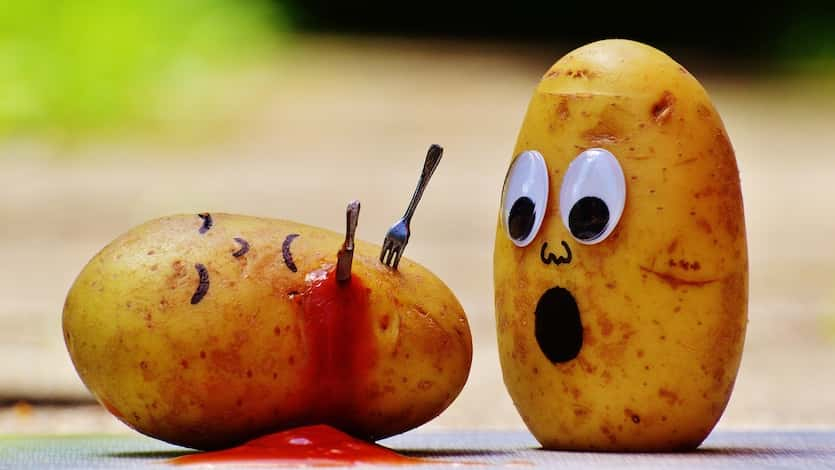Though it’s a niche subject, shooting video of food and drinks in corporate work and commercials has its own challenges that have created a niche industry of professionals who specialize in food photography and food videography. A relative handful of commercial directors (many or most of whom are also cinematographers) specialize in shooting glamorous, appetizing food footage, whether for a new McDonalds commercial or a packaged food item sold at grocery stores. For corporate video purposes, food is more likely to arise in videos for hotels, senior living, upscale restaurants, or even event videos. Though nothing beats hiring a highly paid professional cinematographer who has years of experience making food look great, there are a few tips and tricks for smaller budget shoots that can yield better results than just wing-ing it (get it?).
As with almost all video production tips and tricks, the battle is mostly won in the planning stages. With senior living videos that have dining room footage, hotels that emphasize their restaurant options, and upscale restaurant and lounge videos, the key is selecting the right kinds of food and drinks. Let’s start with the obvious examples of what types of food simply don’t work. If you’re trying to showcase a delicious dessert, anything with ice cream is a no-no because it will be melting by the time the first shot even rolls. For main courses, avoid “comfort food” types of items like mashed potatoes and meatloaf that may taste delicious, but frankly don’t look too appealing on camera. Because film is a visual medium, presentation is extremely important. A colorful salad will look great on camera if shot properly, but a bland looking clam chowder is just going to look boring.
If you’re going to feature food shots in your video, discuss with the chef what you plan to make in advance. Ideally, have him make a few items, snap a picture with an iPhone, and send them to the production company. At least you can ask for some feedback or guidance if you’ve already “camera tested” a few items. Another key is trying to make sure food is symmetrical or neat looking, like a lava cake that’s made in a mold, for instance. Hamburgers are a tough item to show well because the buns are almost always uneven, the meat is rarely proportioned perfectly, and restaurants want to show their burgers as having enough on them, but not looking messy and greasy. Because of the difficulty shooting hamburgers and pizza, most companies that specialize in those food items hire top notch professionals and are using modified or even fake food items to acquire the best possible shots.
Another challenge with food being featured in videos is the necessity of the entire shot looking well ordered and immaculate. What would you think of a shot of some food on a table with the background looking messy, cluttered, maybe even dirty? If the dining area looks dilapidated, don’t expect viewers to get too excited about the food being served, either. You want every place setting to look perfect, every element of the background to look glamorous, and every aspect of the lighting to be flattering to the food. In our experience filming dozens or even hundreds of videos that featured food in some way, the results are hit and miss. How can you prepare for the possibility of mediocre food footage? Fortunately, you can find creative ways to avoid issues while still conveying the basic idea of luxury dining.
If the production is small budget and limited time, with food perhaps a minority concern in the bigger picture, avoid any closeups of the food at all. Close-up food photography and cinematography is its own art deserving of great attention to detail. Instead, focus on the food being served properly, gather close-up shots of people smiling as they are served, and shoot some footage of people toasting wine glasses or talking and laughing. If you can show people happy at the dining area, you’ve already won half of the battle in convincing people subconsciously that dining in your establishment is a great experience. Also, always know that just because you have a variety of food shots in the raw footage doesn’t mean you have to use any of it. If you watch the rough cut of the video and think, “It looks ok,” then by all means ditch it all. Either it should look great and appetizing or it shouldn’t be featured, because the last thing you want anyone else thinking is that your food is just ok.
If you have interview commentary with people talking about the food, the menu options, and the dining service, you already have the basis of a good section on your establishment’s food quality. Focus the B-roll footage on shots of the dining area in general, like a nicely set table, a beautiful view out the window, a friendly server, a wine room, or even a shot of the cook in the kitchen. We have an ongoing company joke, started by our videographer Michael Woxland, of showing a chef in the kitchen shaking a pan with flames rising from it. Visually, it just looks cool and fancy, even if there’s no real point to the shot besides to show someone cooking. By the time you assemble interview commentary, some nice shots of the dining area, a few smiling faces, and a chef cooking with some fire, you have managed to cheat the entire section of the video without ever showing close-ups of any real food.

